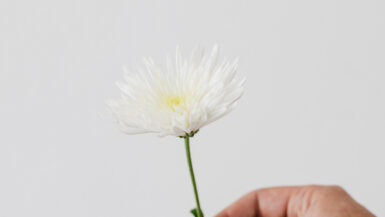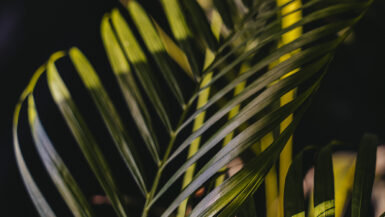There are many advantages to Indoor Vertical Gardening. Vertical gardening has emerged as an innovative and sustainable solution for urban dwellers and gardening enthusiasts. As our living spaces become increasingly confined and the importance of greenery in our lives grows, this method of cultivating plants offers numerous practical and aesthetically pleasing benefits.
This article delves into the essential advantages of indoor vertical gardening, covering space optimization, air purification, mental wellbeing, and food production. By understanding the full potential of this gardening approach, you will be better equipped to transform your living space into a thriving, eco-friendly oasis. So, join us as we explore the myriad benefits of indoor vertical gardening that you need to know.
Enhancing Aesthetic Appeal and Interior Design
Indoor vertical gardening provides practical benefits and is a visually appealing addition to your living space. By incorporating a range of plants, colors, and textures, you can transform your walls into living art, elevating the overall ambiance of your home and creating a more inviting and relaxing environment. This section will discuss some key factors contributing to the aesthetic appeal and interior design enhancement of indoor vertical gardening.
Introducing an Element of Nature
Incorporating greenery into your living space creates a calming atmosphere and serves as a visual reminder of our connection to nature. Plants in a vertical arrangement allow you to bring the serenity of the outdoors into your home, creating a harmonious balance between modern urban living and the natural world.
Color and Texture Variation
An essential aspect of interior design is using color and texture to create visual interest and depth. By incorporating a diverse range of plants into your indoor vertical garden, you can achieve a stunning visual impact that complements and enhances your existing decor. Experiment with different plant types, leaf shapes, and colors to create a vibrant and dynamic display that reflects your unique style.
Flexible and Customizable Design
One significant advantage of indoor vertical gardening is its flexibility. It allows you to design a garden that suits your space, style, and preferences. From simple wall-mounted planters to elaborate living walls, countless options exist to create a garden that meets your needs. For inspiration on making an indoor vertical garden using climbing plants, check out our guide on creating an indoor vertical garden with climbing plants.
Space Optimization and Visual Expansion
Indoor vertical gardening effectively utilizes vertical space, making it an ideal solution for small apartments and homes with limited square footage. This innovative gardening method can make your space feel larger and more open by drawing the eye upward and creating the illusion of height. Additionally, using mirrors or reflective surfaces combined with your vertical garden can further enhance the visual expansion of your living area.
Ultimately, indoor vertical gardening offers a unique opportunity to elevate your living space’s aesthetic appeal and interior design. By thoughtfully selecting plants, colors, and textures and taking advantage of this gardening method’s flexible and customizable nature, you can create a stunning, functional, and eco-friendly addition to your home.
Improving Air Quality with Natural Air Purifiers
Indoor vertical gardening transforms the aesthetics of your living space and remarkably impacts the air quality within your home. Introducing various air-purifying plants can create a healthier and more comfortable environment for you and your family. This section will explore the key benefits of natural air purifiers and share some popular plant choices for your indoor vertical garden.
Reducing Pollutants and Toxins in the Air
Harmful pollutants and toxins released from various sources, such as building materials, furniture, and household cleaning products, often compromise indoor air quality. Plants act as natural air purifiers by absorbing these pollutants through their leaves and roots and converting them into harmless substances. Some plants, such as the Spider Plant and Peace Lily, are particularly effective at removing common indoor air pollutants like formaldehyde, benzene, and trichloroethylene.
Boosting Oxygen Levels and Humidity
Plants are crucial in maintaining a healthy indoor environment by increasing oxygen levels and regulating humidity. Through photosynthesis, plants take in carbon dioxide and release oxygen, ensuring a steady supply of fresh air within your home. Moreover, plants release moisture into the air through transpiration, which can help maintain optimal humidity levels and prevent issues such as dry skin and respiratory discomfort.
Enhanced Cognitive Function and Wellbeing
Improved air quality directly impacts our cognitive function and overall wellbeing. Research has shown that exposure to cleaner air can increase mental clarity, reduce stress levels, and enhance mood. Incorporating air-purifying plants into your indoor vertical garden can create a healthier environment for work, relaxation, and personal growth.
Popular Air-Purifying Plants for Your Indoor Vertical Garden
To optimize the air quality in your home, consider adding some of these popular air-purifying plants to your indoor vertical garden:
1. Spider Plant (Chlorophytum comosum) – Effective at removing pollutants like formaldehyde and benzene.
2. Snake Plant (Sansevieria trifasciata) – Known for releasing oxygen at night and removing toxins from the air.
3. Peace Lily (Spathiphyllum) – A beautiful flowering plant that excels at filtering out harmful chemicals.
4. Boston Fern (Nephrolepis exaltata) – A humidity-regulating powerhouse that can remove pollutants like formaldehyde and xylene.
To sum up, indoor vertical gardening offers a valuable opportunity to enhance the air quality within your home by incorporating natural air purifiers. By carefully selecting plants known for their air-purifying abilities, you can create a healthier, more comfortable, and enjoyable living environment.
Maximizing Limited Space for Urban Gardeners
Indoor vertical gardening is a game-changer for urban gardeners who often face the challenge of limited space. By creatively utilizing vertical space, this gardening method enables city dwellers to grow a diverse range of plants and enjoy the numerous benefits of cultivating a green sanctuary within their homes. In this subsection, we will explore various ways indoor vertical gardening maximizes limited space for urban gardeners, transforming even the tiniest apartments into thriving, eco-friendly havens.
Revolutionizing Small Living Spaces
One of the main obstacles urban gardeners face is the lack of adequate space for traditional gardening. Indoor vertical gardening overcomes this hurdle by allowing plants to grow upwards instead of outwards, ensuring that even the smallest living spaces accommodate a lush and vibrant garden. This innovative approach saves precious floor space and opens up new possibilities for incorporating greenery into previously underutilized areas, such as walls, shelves, and balconies.
Expanding Plant Diversity in Urban Homes
Indoor vertical gardening enables urban gardeners to grow more plants than possible in a conventional garden, catering to various tastes and preferences. This gardening method allows for cultivating plants with different light and moisture requirements, ensuring that each plant receives the optimal conditions for growth. Additionally, the flexibility of indoor vertical gardening means that you can easily swap out or rearrange your plants as your preferences change or as you discover new species to incorporate into your urban oasis.
Creating Multi-Functional Living Spaces
Another advantage of indoor vertical gardening is its ability to transform your living space into a multi-functional hub for various purposes. From providing fresh herbs for cooking to creating a relaxing retreat for meditation and mindfulness practices, an indoor vertical garden can significantly enhance the functionality and enjoyment of your home. Furthermore, vertical gardens can also serve as natural dividers, creating distinct zones within your space and offering increased privacy without compromising aesthetics.
Innovative Solutions for Challenging Urban Environments
Urban living often presents unique challenges, such as limited access to sunlight and fluctuating temperatures. Indoor vertical gardening provides various innovative solutions to overcome these obstacles, ensuring your plants receive the care and attention they need to thrive. For example, you can incorporate grow lights or self-watering systems into your vertical garden design to provide optimal conditions for growth, even in the most challenging urban environments.
To wrap up, indoor vertical gardening is a transformative solution for urban gardeners facing limited space challenges. By utilizing vertical space, expanding plant diversity, creating multi-functional living spaces, and offering innovative solutions for challenging urban environments, this gardening method empowers city dwellers to enjoy the numerous benefits of cultivating their green sanctuaries, regardless of the size of their living space.
Boosting Mental Health and Wellbeing through Greenery
Indoor vertical gardening adds aesthetic appeal and functionality to your living space and significantly contributes to your mental health and overall wellbeing. The presence of greenery in our homes has been scientifically proven to promote relaxation, reduce stress, and increase feelings of happiness. In this subsection, we delve into how indoor vertical gardening can positively impact our mental health, showcasing the therapeutic power of greenery.
Fostering Relaxation and Stress Reduction
The soothing presence of plants in our living spaces remarkably affects our ability to relax and unwind. Studies have shown that exposure to greenery can help lower blood pressure, reduce cortisol levels, and alleviate feelings of stress and anxiety. Incorporating a lush indoor vertical garden into your home creates a tranquil sanctuary that promotes relaxation and helps you recharge after a long day.
Enhancing Concentration and Productivity
Indoor vertical gardening can improve concentration and productivity by providing a calming environment that fosters creativity and focus. Research has demonstrated that the presence of plants in our surroundings can increase attentiveness, improve memory retention, and boost overall cognitive performance. Transform your workspace or study area with a vibrant vertical garden to create an inspiring, energizing, and mentally stimulating atmosphere.
Nurturing Mindfulness and Connection to Nature
Cultivating an indoor vertical garden offers a unique opportunity to nurture mindfulness and forge a deeper connection with nature. Caring for plants encourages us to slow down, be present, and appreciate the beauty and complexity of the natural world. As a result, indoor gardening can serve as a therapeutic practice that fosters self-awareness, inner peace, and a sense of connectedness to our environment.
Encouraging Social Interaction and Emotional Wellbeing
An often overlooked aspect of indoor vertical gardening is its potential to encourage social interaction and enhance emotional wellbeing. Sharing your passion for gardening with friends and family can lead to meaningful connections and a sense of community while promoting a sense of accomplishment and pride in your creations. Furthermore, greenery in your living space can evoke positive emotions and create an inviting atmosphere for social gatherings and shared experiences.
Indoor vertical gardening offers many benefits for our mental health and overall wellbeing. By fostering relaxation, enhancing concentration, nurturing mindfulness, and encouraging social interaction, this innovative approach to gardening has the power to transform not only our living spaces but also our state of mind. Embrace the healing power of greenery and invest in an indoor vertical garden to experience its positive impact on your life.
Reducing Your Carbon Footprint with Sustainable Gardening
Indoor vertical gardening offers practical and aesthetic benefits and contributes to a more sustainable lifestyle by reducing our carbon footprint. By cultivating plants ecologically and making conscious choices about the materials and resources used in our gardens, we can contribute to a greener, healthier planet. This subsection will discuss various ways indoor vertical gardening promotes sustainability and helps minimize our environmental impact.
Conserving Water through Efficient Irrigation Systems
One key aspect of sustainable gardening is efficient water usage. Indoor vertical gardening allows for the implementation of advanced irrigation systems, such as drip irrigation or self-watering planters, which deliver water directly to the plants’ roots. This targeted approach minimizes water waste and ensures plants receive the optimal moisture for healthy growth. Clever watering techniques can significantly reduce water consumption and create a more sustainable future.
Enhancing Energy Efficiency with Strategic Plant Placement
The strategic placement of plants in your indoor vertical garden can significantly impact your home’s energy efficiency. By positioning plants near windows or other natural light sources, you can optimize their access to sunlight and reduce the need for supplemental lighting. Additionally, plants can act as natural insulators, helping regulate indoor temperatures and reducing reliance on heating and cooling systems. This not only leads to energy savings but also helps to lower your carbon footprint.
Reducing Waste and Promoting Circular Economy
Indoor vertical gardening provides an excellent opportunity to repurpose and upcycle materials that would otherwise end up in landfills. There are countless ways to create a sustainable and eco-friendly garden, from using reclaimed wood for planters to transforming discarded containers into pots. By embracing the principles of the circular economy, you can minimize waste, extend the lifespan of materials, and contribute to a more sustainable world.
Supporting Local and Organic Food Production
Growing fruits, vegetables, and herbs in an indoor vertical garden provides fresh, nutritious produce. It helps reduce your carbon footprint by minimizing the environmental impact of food transportation and distribution. By choosing to cultivate organic produce free from harmful chemicals and pesticides, you are also promoting healthier soil, water, and ecosystems. Furthermore, growing your food can foster a greater appreciation for the resources and effort required to produce our food, leading to more mindful and sustainable consumption habits.
Creating a Healthier Indoor Environment with Natural Air Filters
As mentioned earlier in this article, indoor vertical gardening can significantly improve air quality by incorporating natural air purifiers. By reducing pollutants and toxins in the air, you create a healthier living environment and help mitigate the harmful effects of indoor air pollution on the environment. Cleaner indoor air can lead to reduced energy consumption, as there is less need for air purifiers and other devices to maintain a comfortable atmosphere.
To sum up, indoor vertical gardening offers a unique opportunity to reduce your carbon footprint and adopt a more sustainable lifestyle. By conserving water, enhancing energy efficiency, reducing waste, supporting local and organic food production, and creating a healthier indoor environment, this innovative gardening method enables you to make a meaningful contribution to a greener and more eco-friendly future. Embrace the potential of indoor vertical gardening and step towards a more sustainable way of living.







Leave a reply